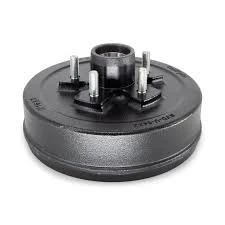
-
 Afrikaans
Afrikaans -
 Albanian
Albanian -
 Amharic
Amharic -
 Arabic
Arabic -
 Armenian
Armenian -
 Azerbaijani
Azerbaijani -
 Basque
Basque -
 Belarusian
Belarusian -
 Bengali
Bengali -
 Bosnian
Bosnian -
 Bulgarian
Bulgarian -
 Catalan
Catalan -
 Cebuano
Cebuano -
 Corsican
Corsican -
 Croatian
Croatian -
 Czech
Czech -
 Danish
Danish -
 Dutch
Dutch -
 English
English -
 Esperanto
Esperanto -
 Estonian
Estonian -
 Finnish
Finnish -
 French
French -
 Frisian
Frisian -
 Galician
Galician -
 Georgian
Georgian -
 German
German -
 Greek
Greek -
 Gujarati
Gujarati -
 Haitian Creole
Haitian Creole -
 hausa
hausa -
 hawaiian
hawaiian -
 Hebrew
Hebrew -
 Hindi
Hindi -
 Miao
Miao -
 Hungarian
Hungarian -
 Icelandic
Icelandic -
 igbo
igbo -
 Indonesian
Indonesian -
 irish
irish -
 Italian
Italian -
 Japanese
Japanese -
 Javanese
Javanese -
 Kannada
Kannada -
 kazakh
kazakh -
 Khmer
Khmer -
 Rwandese
Rwandese -
 Korean
Korean -
 Kurdish
Kurdish -
 Kyrgyz
Kyrgyz -
 Lao
Lao -
 Latin
Latin -
 Latvian
Latvian -
 Lithuanian
Lithuanian -
 Luxembourgish
Luxembourgish -
 Macedonian
Macedonian -
 Malgashi
Malgashi -
 Malay
Malay -
 Malayalam
Malayalam -
 Maltese
Maltese -
 Maori
Maori -
 Marathi
Marathi -
 Mongolian
Mongolian -
 Myanmar
Myanmar -
 Nepali
Nepali -
 Norwegian
Norwegian -
 Norwegian
Norwegian -
 Occitan
Occitan -
 Pashto
Pashto -
 Persian
Persian -
 Polish
Polish -
 Portuguese
Portuguese -
 Punjabi
Punjabi -
 Romanian
Romanian -
 Russian
Russian -
 Samoan
Samoan -
 Scottish Gaelic
Scottish Gaelic -
 Serbian
Serbian -
 Sesotho
Sesotho -
 Shona
Shona -
 Sindhi
Sindhi -
 Sinhala
Sinhala -
 Slovak
Slovak -
 Slovenian
Slovenian -
 Somali
Somali -
 Spanish
Spanish -
 Sundanese
Sundanese -
 Swahili
Swahili -
 Swedish
Swedish -
 Tagalog
Tagalog -
 Tajik
Tajik -
 Tamil
Tamil -
 Tatar
Tatar -
 Telugu
Telugu -
 Thai
Thai -
 Turkish
Turkish -
 Turkmen
Turkmen -
 Ukrainian
Ukrainian -
 Urdu
Urdu -
 Uighur
Uighur -
 Uzbek
Uzbek -
 Vietnamese
Vietnamese -
 Welsh
Welsh -
 Bantu
Bantu -
 Yiddish
Yiddish -
 Yoruba
Yoruba -
 Zulu
Zulu
Understanding Drum Brake Spring Color Codes for Effective Repairs and Maintenance
Understanding Drum Brake Spring Color Codes
Drum brakes are an essential component of many vehicles, providing reliable stopping power. A critical aspect of drum brakes that often goes unnoticed is the role of the brake springs, which help maintain the proper alignment and functionality of the braking system. Understanding the color codes associated with these springs can be invaluable for mechanics and car enthusiasts alike. In this article, we will delve into the significance of drum brake spring color codes and how they can facilitate effective maintenance and repair.
The Importance of Brake Springs
Brake springs are pivotal in the drum brake assembly. They serve several functions returning the brake shoes to their original position after a brake application, maintaining tension on the shoes, and ensuring that the system operates smoothly. Over time and with frequent use, these springs can wear out or become damaged. Thus, regular inspection and replacement of brake springs are essential for ensuring the safe operation of the vehicle.
What is the Color Code?
The color code system for drum brake springs is designed to help mechanics quickly identify the type, strength, and size of the springs. Different manufacturers may use varying colors, but there are common standards that most adhere to. The color coding allows for easy replacement and ensures that the correct spring is used for a specific vehicle make and model. Incorrect spring installation can lead to insufficient braking performance or complete brake failure, making it crucial for technicians to understand these codes.
Common Color Codes and Their Meanings
drum brake spring color code

While there may be variations depending on the manufacturer, certain color codes have become widely accepted within the industry. Here are a few examples of common color codes for drum brake springs
1. Black Springs Typically indicate a standard strength. They are often used on vehicles with average stopping powerrequirements. 2. Yellow Springs Generally denote a stronger spring. Yellow springs may be employed in performance vehicles or in situations where enhanced braking force is necessary. 3. Red Springs Often signify extra heavy-duty springs. They are used in vehicles that experience more significant stress, such as trucks or vehicles used for towing. 4. Green Springs Sometimes indicate lighter strength springs, suitable for smaller vehicles or those with lower weight and braking demands.
Practical Application
When servicing drum brakes, it is essential to consult the vehicle’s service manual for the appropriate color code and specifications. Mechanics should always replace springs with the same strength and size as the original ones. If a color code is not clearly marked or if the springs are unavailable, it may be wise to take the old springs to an auto parts store for proper matching.
Conclusion
Understanding drum brake spring color codes is a vital knowledge area for anyone involved in vehicle maintenance or repair. Utilizing the correct springs enhances vehicle safety and performance while minimizing the chances of brake system failure. As braking systems continue to evolve with newer technologies, staying informed about the best practices and standards, including recognizing and interpreting color codes, will remain essential for effective vehicle upkeep. Whether you are a seasoned mechanic or a car owner looking to perform DIY repairs, mastering the details of brake spring color coding is an invaluable skill that helps ensure your vehicle’s braking system remains reliable and efficient.
-
What Are Drum BrakesNewsJul.07,2025
-
Understanding Brake Drum MaterialNewsJul.07,2025
-
Semi-Trailer Brake Drum: A Key Component for Extreme Loads and Long-Distance TransportNewsJul.07,2025
-
Drum Brake Pads for SaleNewsJul.07,2025
-
Brake Drums for SaleNewsJul.07,2025
-
Brake Drum ManufacturerNewsJul.07,2025
-
Aluminum Brake Drums: The Future of High-Performance CarsNewsJul.07,2025
